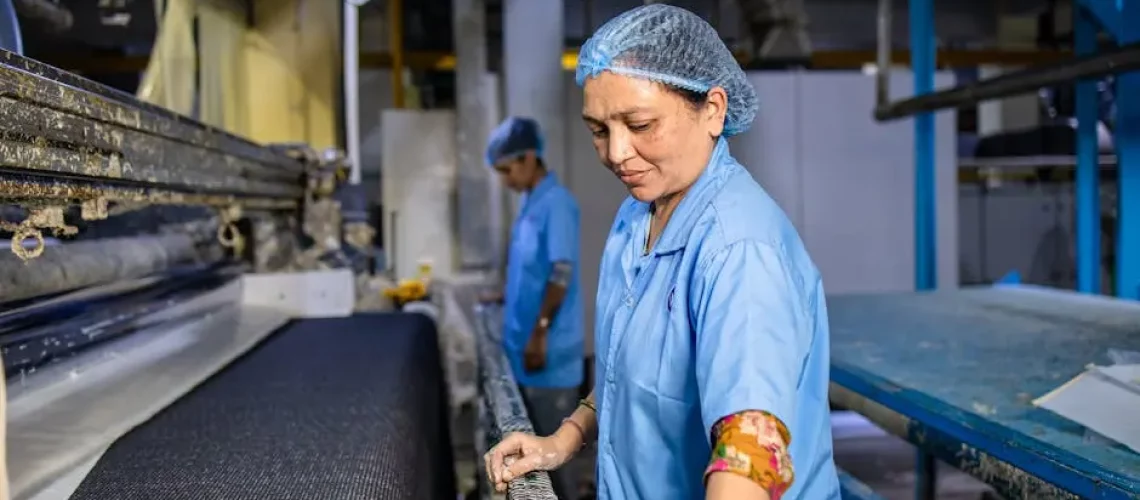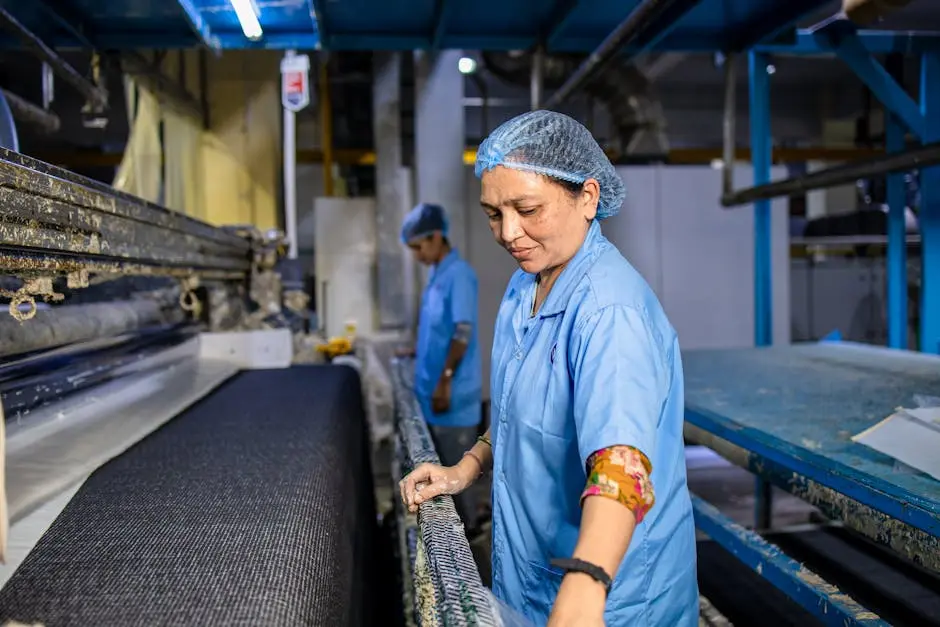Label applicators have come a long way in recent years with advancements that are nothing short of revolutionary. Whether you’re in the packaging industry or just curious about the technological strides in label application, this blog is here to guide you through the most exciting innovations revolutionizing the field.
1. Enhanced Precision with Laser-guided Systems
Laser-guided systems have dramatically improved the precision with which labels can be applied. These systems utilize high-tech sensors that ensure labels are placed at exact positions on products, reducing errors that traditionally led to wastage. Such technology not only enhances the overall aesthetic of the package by maintaining uniform label placement but also aligns with production efficiency goals by minimizing the time spent on corrections. The ability to recalibrate with accuracy means that businesses can now more confidently maintain quality controls even with variations in product shapes and sizes.
Furthermore, the integration of laser guidance into label applicators represents a significant leap towards automation. By minimizing human intervention, these systems not only streamline the workflow but also reduce the potential for human error. This advancement is particularly valuable in high-speed production environments where even minor delays can affect overall productivity. In essence, laser-guided systems are not just about accuracy; they also symbolize the harmonious blend of speed and precision in modern manufacturing.
2. Eco-friendly Materials in Label Manufacturing
The demand for sustainable practices has become a driving force in label manufacturing. A notable trend has been the shift towards eco-friendly materials, which helps reduce the environmental impact of label production and disposal. These materials, often derived from renewable resources, are engineered to decompose more readily than traditional alternatives. As consumers become more environmentally conscious, businesses are responding by integrating these materials into their labeling processes, underscoring a commitment to sustainability without sacrificing quality.
Moreover, innovations in this space have ensured that eco-friendly labels meet the same durability standards as their conventional counterparts. They are resistant to wear and tear, providing the same level of protection and information delivery while promoting a greener footprint. As packaging regulations become stricter regarding sustainability, investing in eco-friendly labeling solutions is not just responsible but necessary for compliance and brand reputation.
3. Integration of AI for Intelligent Labeling
Artificial Intelligence (AI) is at the forefront of intelligent labeling, enabling unprecedented levels of customization and efficiency. With AI, label applicators can now adapt in real-time to changes in production dynamics by analyzing data streams to optimize application processes. This means smarter, adaptive systems that can predict and adjust to potential issues before they result in costly downtime, thereby ensuring smooth operations. The potential for AI to learn from historical data to improve future performance is one of its most significant breakthroughs.
The benefits of AI in labeling extend beyond mere application. It facilitates the collection of valuable data points about production efficiency, error rates, and maintenance needs. Companies can leverage this data to refine their production strategies, ensuring optimal resource utilization and reduced wastage. As AI continues to evolve, its role in the labeling sector promises even more revolutionary changes, empowering businesses with tools for proactive management and decision-making.
4. Robotics for High-speed Production Lines
Incorporating robotics into label applicator systems has been transformative, particularly for high-speed production lines. Robots offer unparalleled speed and consistency, operating around the clock without the fatigue that can lead to human errors. This increased efficiency is crucial in industries where throughput speed equates to competitive advantage. The precise mechanical movements of robots ensure labels are applied uniformly and swiftly, maintaining consistent quality across large batches.
By freeing up human workers from repetitive tasks, robotics also allows companies to reallocate labor resources towards more complex and creative duties. This shift not only enhances job satisfaction among employees but also optimizes talent utilization in companies. As robotic systems become more sophisticated, they are likely to incorporate advanced features such as responsiveness to real-time data and ability to work alongside human counterparts in collaborative settings.
5. User-friendly Interfaces and Control Systems
One of the most significant advancements in label applicators is the development of user-friendly interfaces, making the machines more accessible even to those with minimal technical training. Touchscreen displays featuring intuitive controls allow operators to easily set up and modify label application parameters without steep learning curves. This simplicity reduces the time taken to onboard new employees and helps prevent errors that might arise from misunderstanding complex instructions.
6. Wireless Connectivity for Real-time Monitoring
The advent of wireless connectivity in label applicators has enabled real-time monitoring and control from remote locations. This innovation empowers operators to make necessary adjustments swiftly, ensuring consistent product quality is maintained without requiring physical presence at the production line. Such connectivity is invaluable for supervisors tasked with managing multiple processes simultaneously, providing them with the oversight needed to maintain operational efficiency.
Real-time updates also allow businesses to quickly adapt to changes in production demands or rectify faults as they occur, rather than discovering them post-production. This proactive approach can dramatically reduce waste and improve overall equipment effectiveness (OEE), key metrics in maintaining competitive edge in the fast-paced manufacturing sector.
7. Variable Data Printing Capabilities
Variable data printing (VDP) is a game-changer for customization in labeling. Unlike traditional static labeling methods, VDP allows for on-demand production of unique labels, each tailored to specific batch requirements or personalized customer outreach. This flexibility enables businesses to handle different production runs without the need for downtime to change setups, aiding in the seamless transition between products.
8. Compact and Versatile Design Options
Compact design innovations in label applicators have made it possible to integrate these systems into diverse production environments without occupying excessive space. This is particularly beneficial for operations facing spatial constraints yet require the high functionality these applicators offer. The versatility in design ensures that the machines can be tailored to fit specific operational needs without significant modifications to existing workflows.
9. Automated Fault Detection Systems
Automated fault detection systems embedded in modern label applicators have redefined quality assurance processes. These systems constantly monitor the label application process, identifying any deviations from set parameters instantly. By catching these errors in real-time, they substantially minimize downtime and production waste, ensuring that corrective actions can be implemented with minimal disruption to operations.
This not only saves time and resources but also actively contributes to improved product quality and reliability. As more businesses look to refine their production processes, the capability to detect and address issues instantaneously becomes an invaluable asset.
10. Customizable Modular Systems
Modular systems in label applicators offer unparalleled flexibility, allowing businesses to scale and configure their setups according to specific requirements. This customizable approach means that as demand increases or product lines expand, companies can upgrade their systems without the need for entirely new machines. By enabling modifications and expansions, modular systems reduce the need for frequent overhauls and promote long-term investment into label application technology.
11. Energy-efficient Solutions for Cost Savings
Sustainability has become a cornerstone in industrial innovations, and energy-efficient label applicators are testament to this trend. These solutions reduce power consumption and environmental footprint, making an impact on both operational costs and ecological standards. As companies seek to cut costs while adhering to eco-friendly initiatives, investing in energy-efficient technologies becomes strategically important.
12. Real-time Analytics for Performance Optimization
Leveraging real-time analytics in label applicators opens a wealth of opportunities for performance optimization. By gathering and analyzing data on operational efficiency, machine health, and application accuracy, businesses can make informed decisions to streamline operations. This data-driven approach enhances productivity by pinpointing potential issues before they escalate, enabling proactive maintenance and process improvements.

